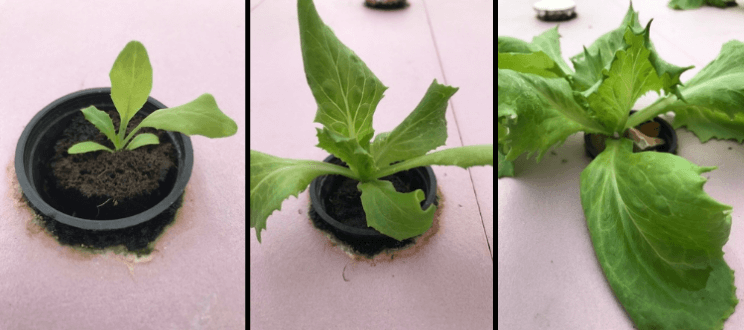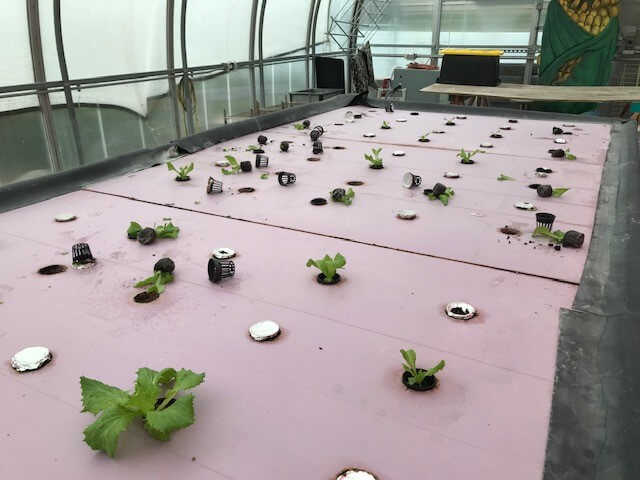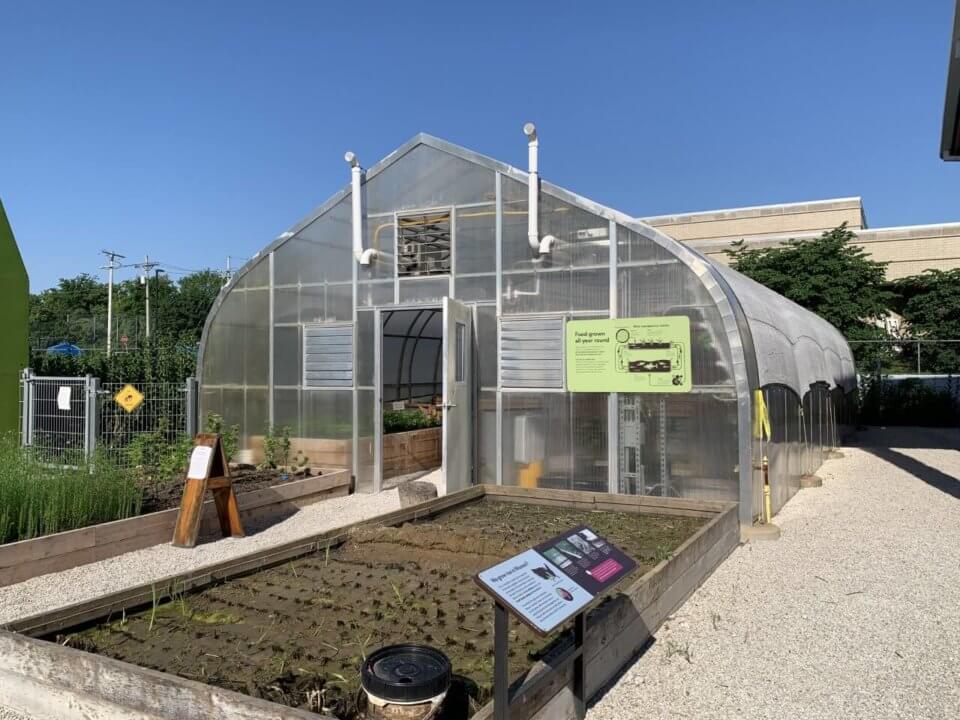Over the summer, we had an optimistic “aha moment” after visiting the VAST Produce hydroponics operation. Our intern, Christopher, and educator Andy returned from their field trip reporting that the folks at VAST seemed to use simple and affordable peat pellets for growing media in their deep water culture bed. If peat pellets could work in our system, that would be a game changer.
Ever since taking on the regular maintenance of the GROW aquaponics greenhouse years ago, we’ve been challenged to find an ideal growing media. We experimented with rock wool, but the material was scratchy and irritating. Plus, since it is essentially rock spun like cotton candy, it can’t be composted much faster than actual rocks and therefore isn’t a sustainable option.
For the past several years, we settled on a workable but very labor-intensive process: We start the seeds in actual soil, then knock off the soil, rinse the roots, and re-pot the plants in net pots filled with rocks before nestling them into the aquaponics bed. We like that the soil can be composted, and the rocks can be cleaned and re-used. However, it takes a lot of time and risks severe transplant shock since it involves such extreme root disturbance.
Since we are the Science Center, we figured an experiment was in order. We started lettuce under our GROW wagon lights in three different media—peat pellets ($13/100ct), incubator plugs ($18/50ct) and soil blocks. The soil-based seedlings performed the best by far as initial seedlings with superior germination and growth. The incubator plugs dried out too quickly and performed the worst with notably poor germination and the most stunted growth. (We suspect they would have done much better in an actual germination chamber, but we want a media that will be visible to guests and won’t depend on additional plastic.) The peat pellets did fine enough to move on to the true test—Will they thrive in the aquaponics system, or will they dissolve into a mess of loose peat in the water?
Upon being transplanted into the aquaponics bed, the soil-based seedlings had initial transplant shock but recovered after a few days. Unsurprisingly, both the peat pellet and incubator plug seedlings showed zero transplant shock, and the peat pellets have remained intact. We eagerly observed their growth for signs that they might be catch up to the soil-based lettuces (largest pictured).

Unfortunately, many of the peat pellets and incubator plugs were vandalized by an unwelcome overnight visitor. Based on the behavior, tracks, and scat, we suspect a racoon ransacked the place—our biggest pest yet! We tidied up as best we can, but now the pellets and plugs have their own form of shock to recover from. Stay tuned to learn how the different growing media performs over the next couple months, and in the meantime, we will keep out future midnight marauders by shutting the door at night!







